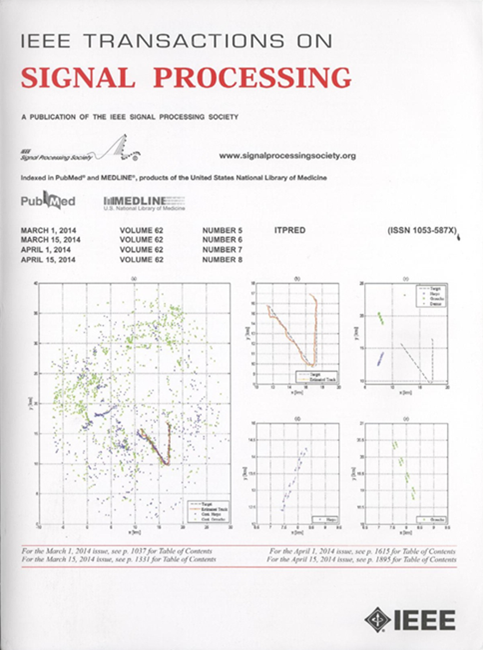Large-Scale Independent Vector Analysis (IVA-G) via Coresets
IF 4.6
2区 工程技术
Q1 ENGINEERING, ELECTRICAL & ELECTRONIC
引用次数: 0
Abstract
Joint blind source separation (JBSS) involves the factorization of multiple matrices, i.e. “datasets”, into “sources” that are statistically dependent across datasets and independent within datasets. Despite this usefulness for analyzing multiple datasets, JBSS methods suffer from considerable computational costs and are typically intractable for hundreds or thousands of datasets. To address this issue, we present a methodology for how a subset of the datasets can be used to perform efficient JBSS over the full set. We motivate two such methods: a numerical extension of independent vector analysis (IVA) with the multivariate Gaussian model (IVA-G), and a recently proposed analytic method resembling generalized joint diagonalization (GJD). We derive nonidentifiability conditions for both methods, and then demonstrate how one can significantly improve these methods’ generalizability by an efficient representative subset selection method. This involves selecting a通过核集进行大规模独立向量分析(IVA-G)
联合盲源分离(JBSS)涉及将多个矩阵(即“数据集”)分解为数据集之间统计依赖而数据集内部独立的“源”。尽管JBSS方法对于分析多个数据集很有用,但它的计算成本很高,而且对于数百或数千个数据集来说通常很难处理。为了解决这个问题,我们提出了一种方法,说明如何使用数据集的一个子集在整个数据集上执行有效的JBSS。我们提出了两种这样的方法:使用多元高斯模型(IVA- g)的独立向量分析(IVA)的数值扩展,以及最近提出的类似于广义联合对角化(GJD)的分析方法。我们推导了这两种方法的不可辨识性条件,然后证明了如何通过一种有效的代表性子集选择方法来显著提高这两种方法的可泛化性。这涉及到选择一个核心集(一个加权子集),使核心集的统计数据与完整集之间的差异最小化。通过模拟和真实的功能磁共振成像(fMRI)数据,我们证明了与其他JBSS方法相比,我们的“coreva - g”方法具有显著的可扩展性和源分离优势。
本文章由计算机程序翻译,如有差异,请以英文原文为准。
求助全文
约1分钟内获得全文
求助全文
来源期刊

IEEE Transactions on Signal Processing
工程技术-工程:电子与电气
CiteScore
11.20
自引率
9.30%
发文量
310
审稿时长
3.0 months
期刊介绍:
The IEEE Transactions on Signal Processing covers novel theory, algorithms, performance analyses and applications of techniques for the processing, understanding, learning, retrieval, mining, and extraction of information from signals. The term “signal” includes, among others, audio, video, speech, image, communication, geophysical, sonar, radar, medical and musical signals. Examples of topics of interest include, but are not limited to, information processing and the theory and application of filtering, coding, transmitting, estimating, detecting, analyzing, recognizing, synthesizing, recording, and reproducing signals.
 求助内容:
求助内容: 应助结果提醒方式:
应助结果提醒方式:


